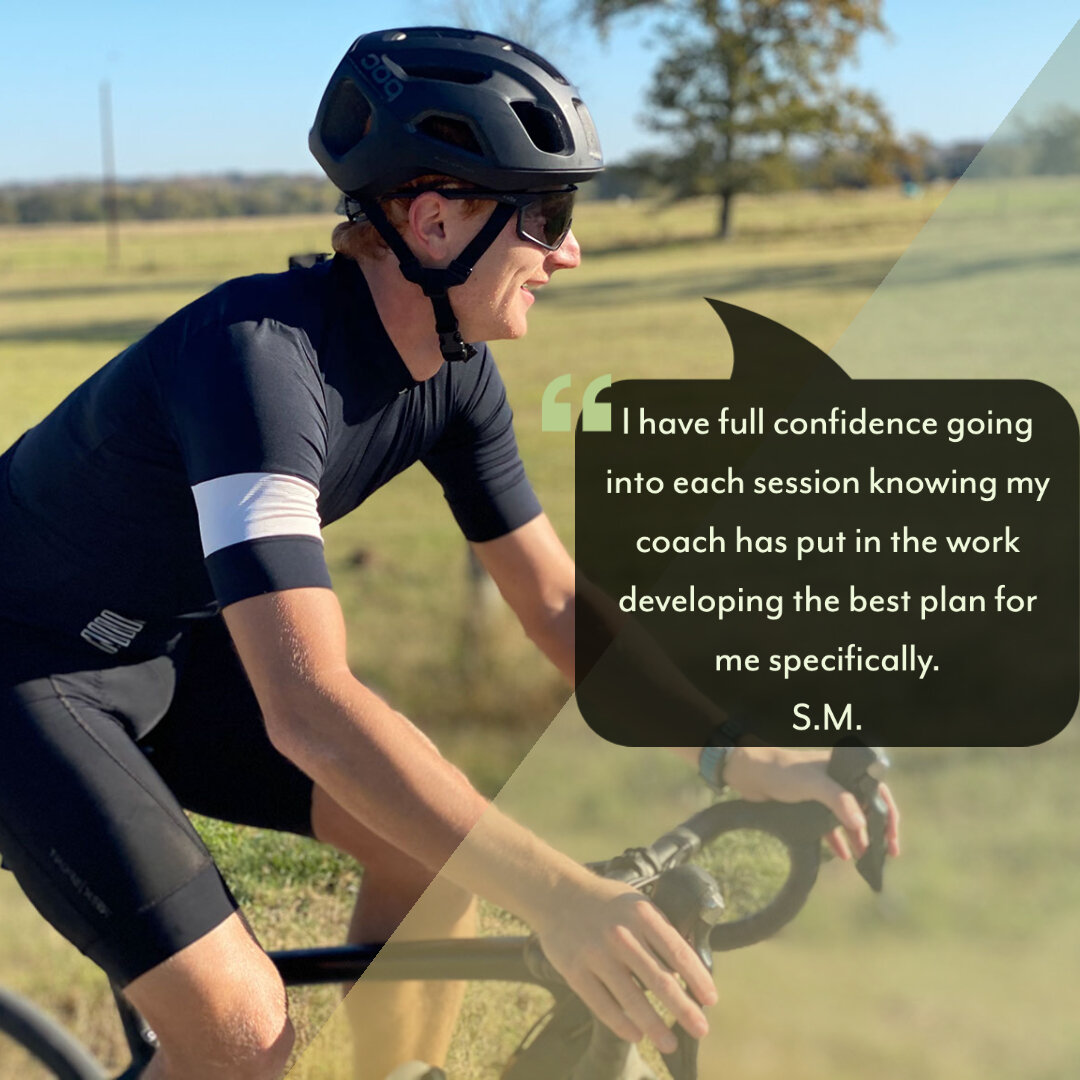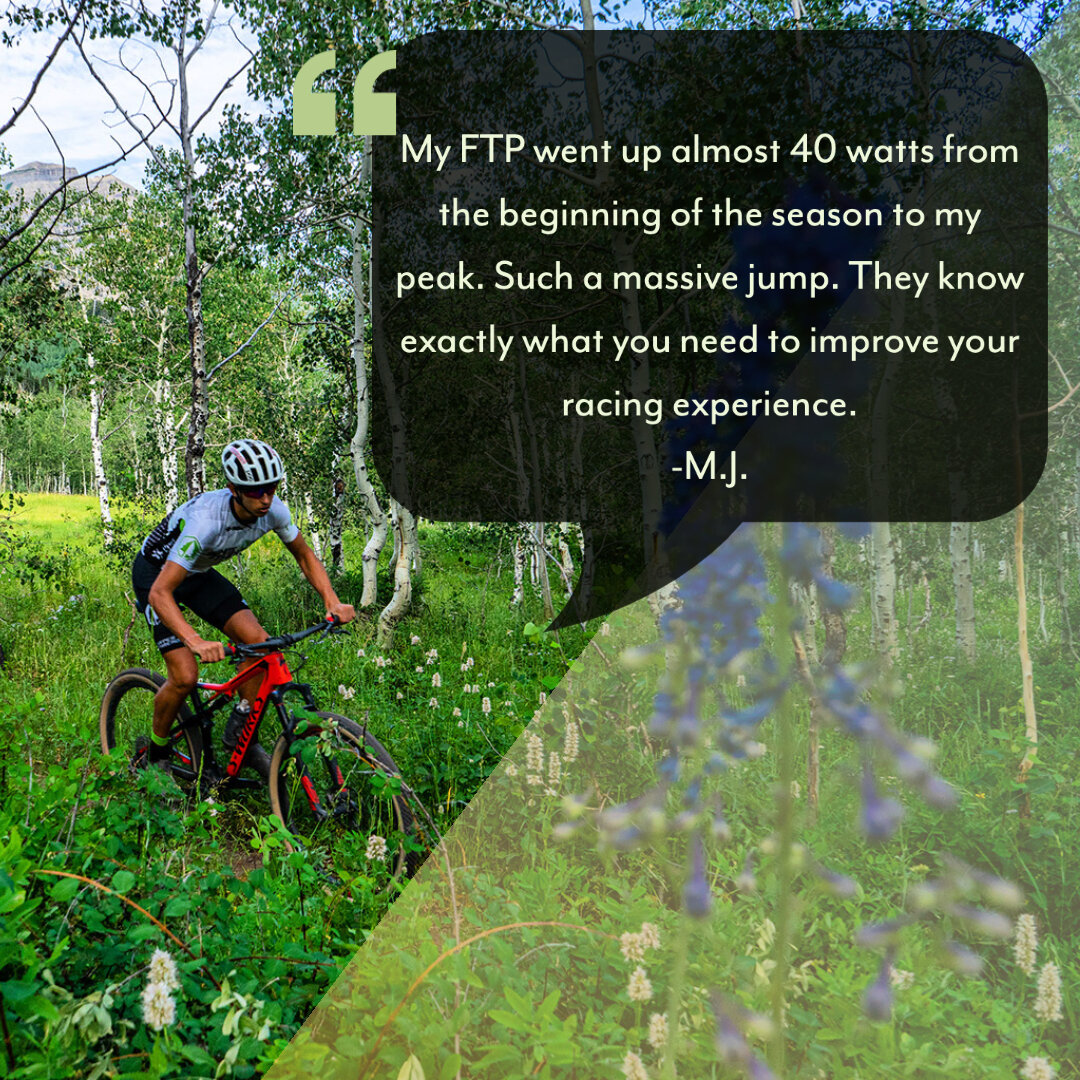By Coach Kyle McFarland
As we begin to crawl out of our climate-controlled winter pain caves and make our way outside to enjoy training and racing in the warmth of the spring sun, it’s important to remember that our bodies may need some time and attention to adjust to warmer temperatures.
Before we get into heat adaptation tips, let’s first take a look at some of the primary (negative) physiological changes that occur in the body when training or racing in a hotter environment:
Decrease in maximal exercise capacity
Decrease in ability to sustain high intensity efforts
Decreased capacity for long duration submaximal exercise
Muscle blood flow is reduced in an effort to be redirected toward the skin for cooling
Decreased stroke volume (SV), mean arterial pressure (MAP), and cardiac output (Q)
This is all to say that the rate and volume of oxygenated blood transported is affected, as well as the transport of metabolic waste products
Increase in heart rate compensation and cardiac drift
Put simply: in hotter environments, we are less effective at putting out hard efforts. For example, interval training or racing becomes harder to execute. Additionally, your ability to perform at submaximal intensity decreases, and even at a non-changing, steady state effort, heart rate increases driving RPE up (rating of perceived effort).
How do we compensate for these effects? The short answer is through heat acclimatization, or the methodical approach to slowly allowing the body adapt to an increase in heat.
Effects of heat acclimatization:
Increased plasma volume
Maintains stroke volume and mean arterial pressure
Allows for an earlier and increased sweat capacity
Earlier onset of sweating
Increased sweat rate
Decreased heat storage
Decreased core temp
Decreases skin blood flow
Helps to maintain skeletal muscle flow and cardiac output
5 Tips to Beat the Heat and Perform Your Best
There are a number of techniques employed by professionals and larger teams in the off season to help with heat acclimatization, such as: sauna training, hot water immersion, training camps in warm environments, and environmental chambers. However, for us “normal” athletes, there are some simple and effective ways to adapt to the heat and make those hot days in the saddle more tolerable.
Exercise Timing
As temperatures creep up across much of the northern hemisphere, it can be helpful to adjust the timing of your daily ride, run, training, etc. In the winter, it’s common to wait until the hottest time of the day to go outside. Now that it’s warming up, it may make sense to get out earlier in the morning before it heats up too much. The benefit here is training in an environment that is still warmer than what you are used to, but not unbearable. As the weeks go on and morning temperatures start to increase, you may find yourself tolerating the heat much better than weeks prior.
Hydration and Nutrition
This one might be one of the most important and overlooked components to heat adaptation. A lot of athletes are unaware of their sweat rate/rate of fluid loss, and how detrimental that can be to thermoregulation and sodium/electrolyte balance. As temperatures increase, our sweat rate tends to increase as a result. (This is a good thing.) Increased sweat rate allows for greater evaporative cooling, with the goal of decreasing core body temperature, thus allowing us to continue to train at a higher intensity. But, as our fluid loss increases, we must also increase fluid intake to compensate, and with it a slight increase in sodium/electrolytes as well. Sports drinks are great for increasing electrolyte intake and thermoregulation on hot days filled with training and racing.
Photo: Kevin Day
There is no magic number for how many ounces to drink per hour. This varies athlete to athlete. However, a good starting point is to aim for 20oz per hour (or one bottle per hour) and make adjustments from there. Depending on intensity level, duration, and climate this may increase significantly.
Warm Up Efficiently
We mentioned earlier that heat increases the sweat rate at the onset of exercise. However, you want to ease into high intensity efforts when acclimatizing to hot environments. If you go from a relaxed state to high intensity too quickly, it leads to an increase in body temperature that is disproportionate to your increase in sweat rate. Simply put, you will begin to increase your body temperature before your body has a chance to activate its ability to cool (i.e. evaporative cooling of sweat). By incorporating a slow and steady warm up, you can increase your sweat race alongside your heart rate, facilitating cooling.
Cool Your Body with Ice and Water
Some days are going to be hotter than others, and your ability to cool yourself via normal thermoregulatory methods might suffer. It might be worth considering ways to enhance this process. One method I have always enjoyed in freezing a spare bottle the night before a hot ride. Typically this bottle is not for drinking. I’ll stick it in a jersey pocket and let the ice cool me down. As it melts, I can also spray it into my helmet, arms, chest, back, etc. to aid in evaporative cooling. Another method you will often see employed by pro teams on the bike is the use of an ice sock. Though we don’t all have access to a team car to hand you ice every 20min, you can still use this tactic out on hot training rides.
Buy a box of panty-hose from a local grocery store, cut them into small pieces and tie a knot at one end, and shove a few in your jersey pocket. When it starts to warm up you can stop at gas stations, fill one with ice and shove it down the back of your jersey to cool you off.* Depending on the length of your ride, you can do this all day. It is hands down one of my favorite cooling techniques in the hotter months of the year.
*Bonus points if you can use this process at a gas station without getting funny looks.
Don’t Avoid Early Season Heat
It can be tempting to avoid the heat as we transition from winter to spring/summer, but these early months of warmth are crucial to allowing your body to adapt. Imagine how horrible it would be if you spent all spring inside where it’s 60-70 degrees, cooled by a fan pointed directly at you while sipping on bottomless bottles of ice water. Then, you finally make the choice to head outside to train or race, but temperatures have already climbed to 90+ degrees. Your acclimatization process will be so much smoother if you ease into it early in the season, and allow yourself to experience a gradual increase in temperature. We spend all winter preparing our body for the rigors of racing with countless hours of training, obsessing over nutrition, and overthinking every possible race day scenario. It would be a shame to arrive at race day and be forced to give anything but your best effort, or worse, risk significant damage to your health and wellbeing. Gradually increasing your exposure to the heat will help to ensure a smooth transition to summer training and your ability to perform in the heat.
Disclaimer: These are all general guidelines for a seasonal approach to heat adaptation. It is absolutely crucial to be mindful of how you are feeling, and watch for symptoms of heat exhaustion, heat stroke, and dehydration. If you experience any of these, cease exercise immediately. Athletes with sweating disorders, or other conditions may need to consult a physician for further guidance.






